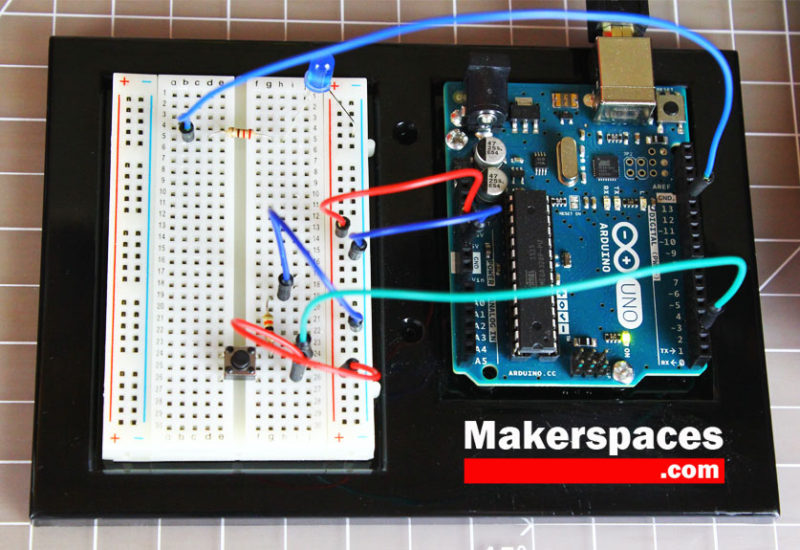

- #ARDUINO UNO R3 PROGRAMMING TUTORIAL HOW TO#
- #ARDUINO UNO R3 PROGRAMMING TUTORIAL PDF#
- #ARDUINO UNO R3 PROGRAMMING TUTORIAL CODE#
If – else statement is used to check for a condition and execute a block of code in the program. either turn it on or off, we need to use a conditional statement called if and else. With this step, we now have captured the status of the button in a variable.

Now in the loop function, assign the return value of the digitalRead of 10 th pin to the buttonstate variable. Create a variable before setup and name it as “buttonstate”, so that the value returned by the digitalRead function can be captured.

Similarly, if the digitalRead detects 0V at the pin, then LOW is returned.Ĭoming to our circuit, we need to read the status of the button pin i.e. If the digitalRead detects 5V at the pin, then HIGH is returned. The digitalRead function can return two values: HIGH or LOW. In the syntax, pin no indicates the number of the digital pin from which you want to read the digital data. The syntax of digitalRead function is digitalRead (pin no) it reads for logic LOW or HIGH at the digital pins. In order to do this, we need to use a function called digitalRead () ĭigitalRead, as the name specifies, is a function which is used to read values from digital pins i.e. Once we initialized the pins for LED and switch, the next step is to check for the status of the switch. Hence, write the pinMode functions for both LED and button pin in the setup function. As we have seen in the previous tutorial, we need to use the function pinMode to initialize a pin as input or output. So, the first step is to initialize a pin (Pin 13) of the Arduino as output for LED and another pin (Pin 10) as input for button. Initialize a pin as input for the button or switch.Initialize a pin as output for the LED.With the help of this transition from Logic HIGH to Logic LOW, we can detect if the button is pressed or not and subsequently turn the LED on or off.Īs the circuit is successfully described with its design and theory, the next step is to write the program or sketch for this circuit and logic in the Arduino IDE.įor writing the code easily, we need to follow the following steps. Hence, if the button is pressed, the connection between the pin 10 of Arduino and ground is closed and as a result, Arduino will detect a logic LOW on the 10 th pin. Also, the button is connected between pin 10 and ground. As mentioned earlier, the 10 th pin of the Arduino is pulled high and as a result, it continuously detects logic HIGH. Now, we will see the theory behind the button press. The power supply to the breadboard can be given from 5V and GND pins of the Arduino UNO. Now connect one end of the switch or button to the 10 th pin of the Arduino and the other end is connected to ground. Hence, 10 th pin of the Arduino will continuously detect logic HIGH. the 10 th pin of the Arduino is pulled high. The next step is to connect a 10 Kilo Ohm resistor between 10 th pin of Arduino UNO and 5V supply i.e. The cathode of the LED is connected to ground. In this circuit, the anode of the LED is connected to 13 th pin (or any other digital pin for that matter) of the Arduino UNO through a current limiting resistor of 1 Kilo Ohms. The schematic for the project is shown below.

In this project, we are going to turn on an LED when a button is pushed. For the purpose of this tutorial, we need the following components. In order to explore further in to Arduino, we will design a circuit and write our own sketch for it.
#ARDUINO UNO R3 PROGRAMMING TUTORIAL HOW TO#
We have also seen how to modify some parameters like LED pin and duration delay. We have seen about comments, setup, loop, pin initialization, driving an output pin as HIGH or LOW and delay function.
#ARDUINO UNO R3 PROGRAMMING TUTORIAL PDF#


 0 kommentar(er)
0 kommentar(er)
